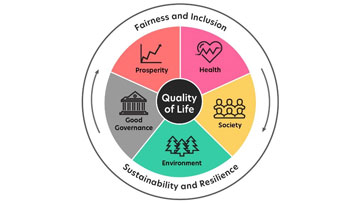Education, training and learning statistics
The Canadian Centre for Education Statistics provides the latest information on education, training and learning by bringing together data, tools and reports.
This data portal offers access to a centralized collection of information on learners and the systems that support learning in Canada. These data are available thanks to the participation of Canadians in our surveys and our partnerships with provincial and territorial education authorities and organizations.
Features
Key indicators
Selected geographical area: ~ ' ' ~ Canada ~ ''; ?>
-
1,152,105+0.8%
 (annual change)
(annual change) -
284,160+8.1%
 (annual change)
(annual change)
More key indicators
Selected geographical area: ~ ' ' ~ Canada ~ ''; ?>
-
611,718+2.7%
 (annual change)
(annual change) -
288,801+40.1%
 (annual change)
(annual change) -
71,574-0.6%
 (annual change)
(annual change) -
Percentage of men aged 25 to 34 with an apprenticeship certificate - Canada
(2016 Census of Population)7.8% -
Percentage of women aged 25 to 34 with a bachelor's degree or higher - Canada
(2016 Census of Population)40.7% -
51,150-7.4%
 (annual change)
(annual change) -
405,6992.8%
 (annual change)
(annual change) -
Percentage of adults aged 25 to 64 with an apprenticeship or trades certificate or diploma - Canada
(2016 Census of Population)10.8% -
22.4%
-
Percentage of adults aged 25 to 64 with a bachelor's degree or higher - Canada
(2016 Census of Population)28.5%
Education data visualization

The Elementary to Postsecondary Student Education Dashboard: Enrolments, Graduations and Tuition Fees comprehensive data visualization tool overviews counts of enrolments and graduations for elementary to postsecondary education. It also includes the cost of tuition for full-time studies at Canadian degree-granting postsecondary public institutions for the current academic year (September to April).
View all Education-related data visualizations.
Quality of Life Hub

Multiple education indicators are covered by the Prosperity domain of the Quality of Life Framework for Canada, such as Youth not in employment, education or training, and Postsecondary attainment. Find out more on the Quality of Life Hub.
Sustainable development goals

Goal 4 – Quality education of the Sustainable Development Goals is to ensure inclusive and equitable quality education and promote lifelong learning opportunities.
The transition from school to work

The impact of the COVID-19 pandemic on the proportion of youth not in employment, education or training: A regional analysis and international perspective. Over the course of the pandemic, measures put in place to prevent the spread of COVID-19 posed unprecedented disruptions for youth aged 15 to 29 with the shift to virtual learning, loss of employment opportunities and the decline of mental health and wellbeing.
Client services

A variety of custom data products (e.g., tables, maps, etc.) can be personalized to meet clients' special requirements. Send us your custom requests by email at statcan.education-education.statcan@statcan.gc.ca.
What's trending in education?
Explore recent statistics on Education, training and learning in Canada through:
Education, training and learning surveys and statistical programs
Complete list of surveys and statistical programs. Information on activities whose purpose is to develop knowledge, skills, understanding, and values.
Education and Labour Market Longitudinal Platform (ELMLP)
The Education and Labour Market Longitudinal Platform (ELMLP) is a platform of securely integrated anonymized datasets which are longitudinal and accessible for research and statistical purposes.
The Platform enables analysis of anonymized data on past cohorts of college/university students and registered apprentices, in order to better understand their pathways and how their education and training affected their career prospects in term of earnings.
Integrated datasets allow us to know more than what a single dataset or survey can provide. Datasets are integrated using an anonymous linkage key.
The data available within the Platform is also linkable longitudinally, allowing researchers to better understand the behaviours and outcomes of students and apprentices over time.
For more information, consult the Overview of the Education and Labour Market Longitudinal Platform and Associated Datasets and the ELMLP Technical Reference Guides, or browse findings available on the Statistics Canada website, including information on student pathways through postsecondary education, labour market outcomes for college and university graduates, earnings and mobility indicators for newly certified journeypersons in Canada, and pathways indicators for registered apprentices in Canada.

 Adult learning
Adult learning Apprenticeship and trades
Apprenticeship and trades Early childhood education
Early childhood education Education and labour market outcomes
Education and labour market outcomes Education indicators
Education indicators Educational attainment and qualifications
Educational attainment and qualifications Elementary and secondary education
Elementary and secondary education Financial resources invested in education
Financial resources invested in education Literacy
Literacy Postsecondary education
Postsecondary education







